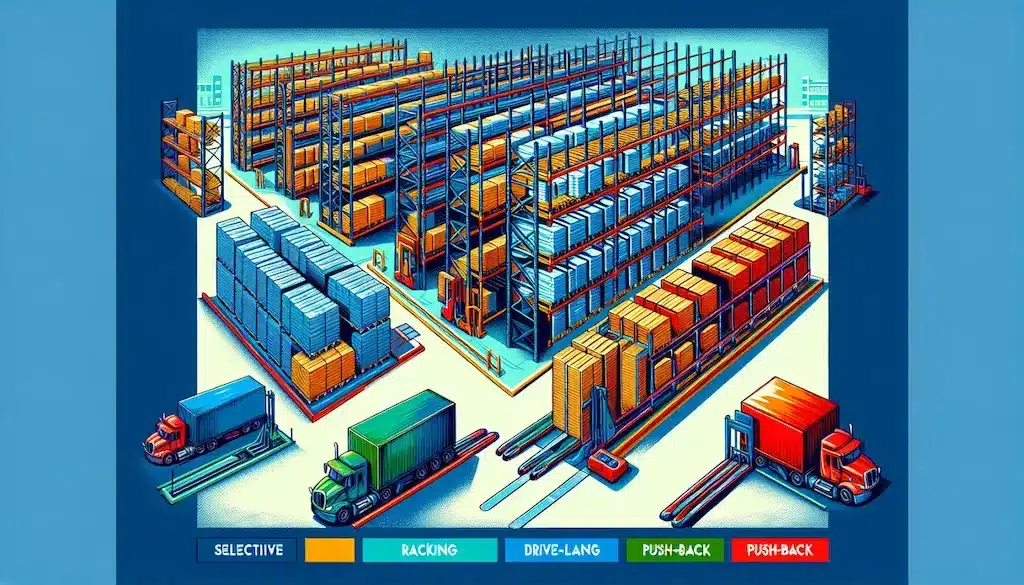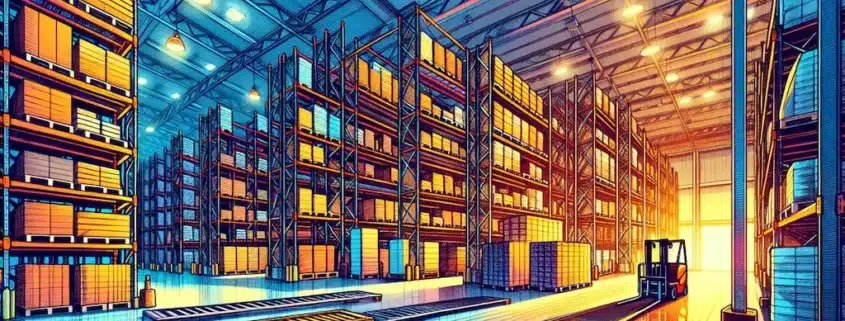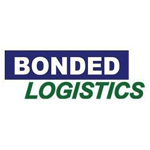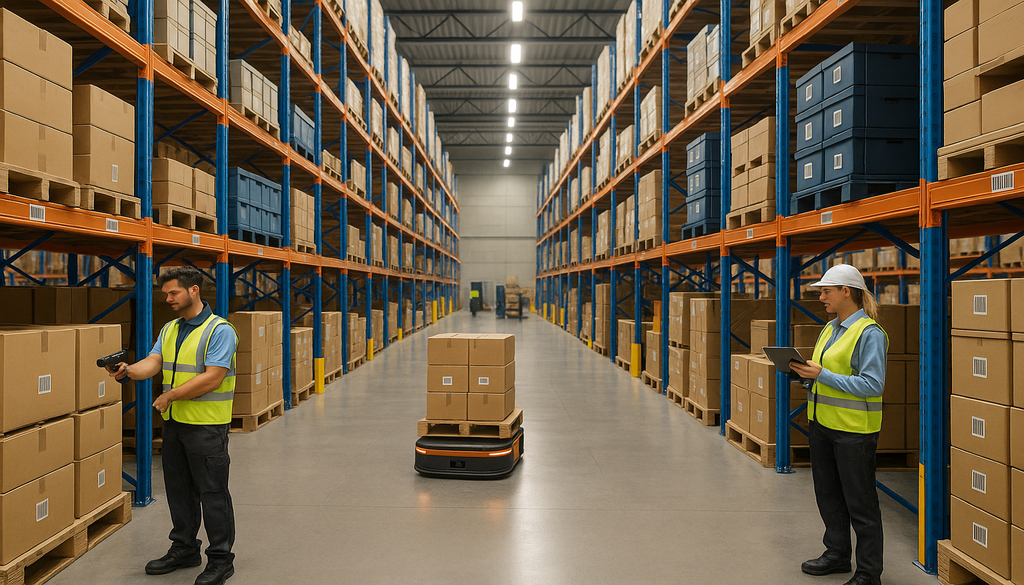Guide to Pallet Racking Systems for Warehouses
Pallet racking systems are crucial for any efficient warehouse. They maximize storage by using vertical space effectively. This article covers different pallet racking types, essential components, and tips for safe, efficient design and maintenance.
Key Takeaways
- Pallet racking systems are essential for maximizing warehouse space and improving operational efficiency by allowing direct access to stored items.
- Choosing the right components, such as frames, beams, and decking, is crucial for the stability and efficiency of pallet racking systems, impacting overall productivity.
- Regular maintenance, inspections, and adherence to safety standards are vital for preventing accidents and prolonging the lifespan of pallet racking systems.
Understanding Pallet Racking Systems
Pallet racking systems store items on pallets in horizontal rows, effectively maximizing both floor and vertical space in a warehouse. These systems enhance operational efficiency by streamlining storage and retrieval processes, ensuring that inventory is organized and accessible. The variety of pallet racking and warehouse racking systems available allows businesses to tailor their storage solutions to specific operational needs.
One of the most widely used types of racking is selective pallet racking, which offers direct access to each pallet without the need to move others. While this makes it highly efficient for inventory management and quick retrieval of items, selective racking may not be the most space-efficient option for high-density storage.
Effective warehouse design involves maximizing vertical space and optimizing traffic flow to improve productivity and safety during material handling operations. By considering factors like inventory turnover and forklift access, warehouses can achieve a layout that supports both storage efficiency and operational safety.

Key Components of Pallet Racking Systems
Understanding the core components of pallet racking systems is essential for creating a safe, efficient, and durable storage solution. The primary components include upright frames, beams, and decking options, each contributing to the stability and functionality of the system.
Frames: The Backbone of Pallet Racks
Frames provide the vertical structure that supports the entire racking system. Made from high-strength steel, they are designed to handle heavy loads and offer long-term durability. Common locking mechanisms for connecting beams to uprights include teardrop and keyhole styles, which ensure secure, stable connections.
When choosing frames, factors such as load capacity, height, and depth are critical to ensure they meet the specific requirements of your warehouse operations.
Beams: Connecting the Structure
Beams are horizontal components that determine the shelf length and provide support for pallets. Selecting beams with the appropriate length and weight capacity is vital for creating a stable racking system. The dimensions of stored goods and the weight of pallet loads influence beam specifications, ensuring both efficiency and safety.
Decking Options for Pallet Racks
Decking enhances the versatility and safety of pallet racking systems. The most common decking materials include:
- Wire Mesh Decking: Offers improved safety by preventing items from falling while allowing visibility and ventilation. It is also compliant with many fire safety codes as it permits sprinkler penetration.
- Plywood Decking: A solid surface option suitable for non-standard or smaller items.
- Steel Decking: Provides robust support for heavier loads and increased durability.
Proper selection and installation of these components ensure the racking system operates at maximum efficiency and aligns with safety requirements.
Types of Pallet Racking Systems
Pallet racking systems come in a variety of configurations, each tailored to specific storage needs and designed to optimize warehouse efficiency. These systems are highly adaptable, allowing for reconfiguration as inventory and operational demands evolve.
Selective Pallet Racking
Selective pallet racking is the most common type of racking system, offering direct access to each pallet. Its design supports straightforward inventory management and fast retrieval of items, making it ideal for warehouses with high SKU variety.
However, while selective racking maximizes accessibility, it may not be the most space-efficient option, as its design prioritizes ease of access over density. For warehouses looking to increase capacity without sacrificing accessibility, narrow aisle configurations can accommodate additional racking rows within the same square footage.
Drive-In and Drive-Through Racking
These high-density systems are ideal for storing large quantities of similar products:
- Drive-In Racking: Forklifts enter from one side to load and unload pallets, creating a last-in, first-out (LIFO) inventory system.
- Drive-Through Racking: Allows forklifts to access pallets from both sides, supporting a first-in, first-out (FIFO) inventory flow.
These systems maximize storage capacity but require careful handling to avoid damage to racking and inventory.
Push-Back Racking
Push-back racking uses a series of nested carts that move along inclined rails. Pallets are loaded from the front and automatically pushed back as new pallets are added. This system allows for higher storage density while enabling quick pallet retrieval. However, it works best for warehouses storing products with moderate turnover and lower SKU variety.
Pallet Flow Racking
Also known as gravity flow racking, this system uses inclined tracks with rollers to move pallets from the loading to the picking side. It supports FIFO inventory management and is commonly used in high-volume operations. Pallet flow racking maximizes both density and efficiency, making it an excellent option for perishable goods or products with strict rotation requirements.
Selecting the right pallet racking system depends on factors such as inventory turnover, product type, and available space. Customizing these systems to align with operational needs ensures long-term productivity and safety.

Designing Your Warehouse Layout
A well-designed warehouse layout is crucial for maximizing storage capacity and improving operational efficiency. Pallet racking systems play a key role in optimizing both floor and vertical space, helping businesses organize inventory and streamline material handling.
Maximizing Space and Flow
Effective warehouse design begins with assessing storage requirements and available space. Vertical storage should be prioritized to make the most of the facility’s height, while ensuring easy access to stored items. Organized layouts reduce the time spent searching for inventory, boosting productivity and minimizing disruptions.
Proper aisle widths are another critical factor. The aisle configuration depends on the type of forklift or material handling equipment used. Narrow aisle designs maximize storage density but may require specialized forklifts, while standard aisle widths provide greater maneuverability for conventional equipment.
Starter Bays and Add-On Bays
Starter bays serve as the foundation of a pallet racking system, while add-on bays provide flexibility for future expansion. This modular approach allows businesses to adapt to changing inventory needs without significant reconfiguration or expense.
For instance, you can start with a single starter bay and gradually add more bays to accommodate growing storage demands. This scalability makes pallet racking systems a cost-effective solution for warehouses of all sizes.
Calculating Row Lengths and Aisle Widths
Accurate measurements of row lengths and aisle widths are essential for creating an efficient layout. When determining dimensions, consider:
- Frame Height and Depth: Ensure frames fit within the available space while supporting the required load.
- Pallet and Forklift Dimensions: Account for pallet size and forklift head length to ensure safe and efficient maneuverability.
- Operational Flow: Design layouts that minimize travel time for workers and equipment.
Proper planning of row lengths and aisle widths not only maximizes storage capacity but also improves traffic flow and safety.By designing your warehouse layout with these principles in mind, you can create a system that supports seamless operations, reduces costs, and enhances overall efficiency.
Safety Considerations for Pallet Racking
Safety is paramount when implementing pallet racking systems. These systems play a critical role in maintaining an organized and secure warehouse environment, reducing the risk of accidents and inventory damage. Adhering to safety standards and conducting regular inspections are essential for ensuring the structural integrity and longevity of your racking systems.
Anchors and Column Guards
Anchors secure pallet racks to the floor, preventing tipping and ensuring stability during operations. Column guards offer additional protection by absorbing impacts from forklifts and other equipment, minimizing the risk of damage to upright frames.
Regular inspections should check for:
- Damage to uprights or beams.
- Missing or damaged safety clips.
- Loosened anchor bolts or connections.
Engaging professional inspectors can help identify potential hazards and ensure compliance with regulations, such as OSHA warehouse safety standards.
Load Capacity and Weight Distribution
Every pallet rack has a specified load capacity, which must be strictly observed to prevent structural failure. Overloading racks or unevenly distributing weight across shelves can compromise stability, increasing the risk of collapse.
Tip: Clearly label load capacities on racks to ensure workers adhere to safety guidelines. Train staff to follow proper loading procedures and avoid exceeding weight limits.
Routine Maintenance and Inspections
Routine maintenance prevents unexpected failures and extends the life of your pallet racking systems. Key maintenance practices include:
- Tightening bolts and anchors regularly.
- Replacing damaged beams, uprights, or decking components.
- Cleaning racks to reduce clutter and improve visibility.
By incorporating regular inspections and maintenance into your warehouse operations, you can ensure a safe working environment while maximizing the durability of your pallet racking systems.
Effective pallet racking safety measures not only protect employees but also safeguard inventory, making them a vital aspect of warehouse management.

Purchasing and Installation of Pallet Racking Systems
Purchasing and installing pallet racking systems is a significant investment that requires careful planning and consideration. From selecting the right components to ensuring proper installation, each step is critical for creating a system that meets your warehouse’s operational needs.
Choosing the Right Supplier
Selecting a reliable supplier ensures that your pallet racking system meets quality and safety standards. Look for a supplier with:
- A proven track record in the industry.
- High-quality products made from durable materials.
- Personalized service to recommend the best solution for your specific needs.
- Clear documentation on load capacities, installation instructions, and safety guidelines.
A trusted supplier will work closely with you to design a system tailored to your warehouse’s requirements, providing expert advice and support.
Professional Installation Services
Proper installation is essential for the safety and functionality of your pallet racking system. Certified installers follow best practices and comply with industry regulations, reducing the likelihood of errors that could lead to safety hazards or system failures.
Professional installation services typically include:
- Anchoring racking systems securely to the floor.
- Ensuring components are assembled correctly and safely.
- Verifying that load capacities are clearly marked and understood.
Investing in professional installation saves time and helps avoid costly mistakes, ensuring your racking system integrates seamlessly with your existing warehouse operations.
Assessing Layout and Space Requirements
Before purchasing a system, conduct a thorough assessment of your warehouse layout to determine the ideal configuration for your racking. Consider factors such as:
- Available floor and vertical space.
- Aisle width requirements based on forklift use.
- The types of products and pallets you’ll be storing.
Careful planning during the purchasing and installation phases ensures your pallet racking system is optimized for efficiency, safety, and scalability.
Maintenance and Inspection of Pallet Racking Systems
Regular maintenance and inspections are essential to ensure the safety, efficiency, and longevity of pallet racking systems. Proactively addressing issues like wear and tear, improper loading, or damaged components helps prevent accidents and costly downtime.
Routine Inspections and Repairs
Routine inspections should be part of your warehouse’s standard operating procedures. During inspections, focus on:
- Structural Integrity: Check for damaged beams, uprights, and safety clips.
- Anchors: Ensure anchor bolts are secure and intact to maintain rack stability.
- Connections: Verify that all beams are properly seated and locked into place.
- Load Limits: Confirm that racks are not overloaded and that load distribution is even.
Timely repairs, such as replacing damaged components or tightening loose connections, maintain the system’s structural integrity and prevent minor issues from escalating.
Best Practices for Long-Term Maintenance
Adopting best practices for maintenance enhances the performance and lifespan of pallet racking systems:
- Keep Racks Clean: Remove dust and debris to reduce clutter and improve visibility.
- Display Load Capacity Labels: Clearly label load limits on racks to ensure compliance with weight guidelines.
- Train Employees: Educate staff on proper loading techniques and the importance of adhering to safety standards.
Ensuring Compliance with Safety Standards
Adherence to safety standards, such as OSHA guidelines, minimizes risks associated with pallet racking systems. Regular audits and professional evaluations can help identify potential hazards and maintain compliance with regulations.
The Role of Preventative Maintenance
Preventative maintenance reduces the likelihood of accidents, extending the lifespan of racking systems and supporting safe, efficient operations. Establishing a maintenance schedule that includes regular inspections, cleaning, and repairs ensures your pallet racking system remains a reliable backbone of your warehouse.
Summary
Optimizing your warehouse efficiency with the right pallet racking system involves understanding the available options, selecting suitable components, and ensuring proper installation and maintenance. From maximizing vertical storage to enhancing safety through regular inspections, every aspect of your pallet racking setup contributes to a well-organized and efficient warehouse. By choosing a system that aligns with your operational needs, you can improve productivity, reduce costs, and create a safer working environment.
Optimize Your Warehouse Operations with Cadre Technologies
Pallet racking systems are just one piece of the puzzle when it comes to efficient warehouse operations. With Cadre Technologies’ advanced warehouse management solutions, you can integrate real-time inventory tracking, improve slotting accuracy, and streamline overall workflows. Our software ensures your warehouse operates at peak efficiency, helping you meet today’s demands and prepare for tomorrow’s growth.
Ready to elevate your warehouse operations?
Learn more about how Cadre Technologies can help you optimize your storage and inventory management.
Learn More About Our Warehouse Solutions
Frequently Asked Questions
What is the most commonly used pallet racking system?
Selective pallet racking is the most widely used system because it provides direct access to every pallet. This design makes inventory management and item retrieval efficient and straightforward, especially in warehouses with high SKU variety.
What are the key components of a pallet racking system?
A pallet racking system primarily consists of:
Upright Frames: The vertical structure supporting the system.
Beams: Horizontal components connecting the frames and supporting pallets.
Decking Options: Materials like wire mesh or plywood that enhance safety and adaptability.
Each component plays a critical role in creating a sturdy and efficient storage solution.
How do drive-in and drive-through racking systems differ?
Drive-In Racking: Forklifts access the racks from one side only, making it ideal for LIFO (last-in, first-out) inventory systems.
Drive-Through Racking: Forklifts can access the racks from both sides, enabling FIFO (first-in, first-out) operations. This makes drive-through racking more versatile for high-density storage.
Why is regular maintenance important for pallet racking systems?
Regular maintenance helps prevent unexpected failures, ensures safety, and prolongs the life of the racking system. By adhering to load capacity guidelines, conducting inspections, and addressing wear and tear, businesses can avoid accidents and costly downtime.
What should be considered when designing a warehouse layout?
Key factors include:
Row Lengths: Calculate dimensions based on pallet size and inventory needs. An efficient layout streamlines operations, reduces costs, and enhances productivity.
Maximizing Space: Use both floor and vertical space effectively.
Aisle Widths: Ensure proper widths based on forklift type for safe and efficient access.










